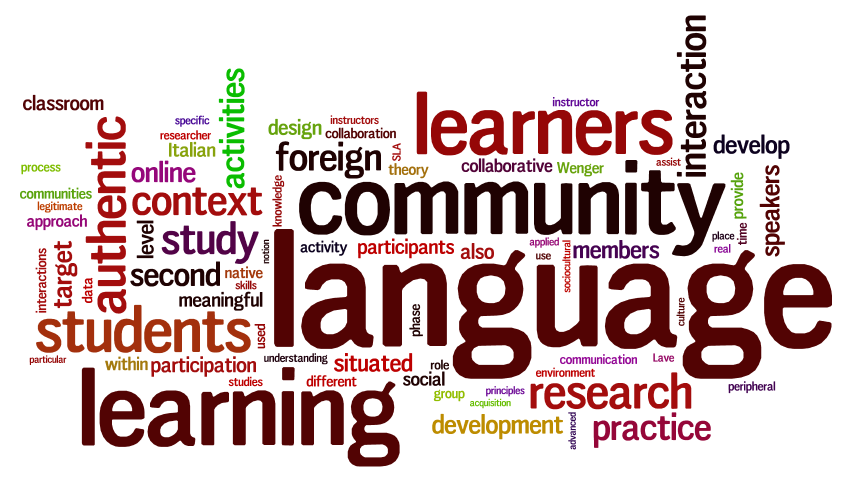Mariolina Pais Marden
Investigating an online community of second language learners using design-based research
THESIS DOWNLOAD:
Abstract
The purpose of this research was to investigate the development and implementation of an online community of learners within the context of an intermediate and advanced level Italian as a second language university class using a design-based research approach.
The online learning community of this study was developed to address some of the issues related to learning a second language in a context where learners only have limited opportunities to engage in collaborative social interaction and participate in meaningful and authentic activities with other speakers of the target language, such as more competent peers and native speakers.
The development of the learning environment drew upon theories and principles derived from the literature, including Vygotsky’s sociocultural theory applied to second language learning, theories of situated and authentic learning, and principles that guide the development of online communities of practice and communities of learners.
The learning environment comprised a course website, which provided a combination of different text-based synchronous and asynchronous Computer Mediated Communication (CMC) tools to support communication and collaboration within the learning community, two authentic tasks designed according to the defining elements of authentic tasks identified in the relevant literature, together with the support and assistance provided by selected native speaker facilitators.
The research sought to investigate students’ views and opinions on the impact of each element of authentic tasks on their learning, the process and strategies employed by students to collaborate in a community of learners, the nature of students’ contributions to the CMC features provided in the course website, and the role of native speaker facilitators in assisting and supporting students’ collaborative work.The study was structured within a four-phased design-based research approach, which allowed the researcher to progressively test and refine the learning environment developed through a series of successive iterative implementations, and to develop a new set of design principles to guide the development and implementation of similar learning environments in other second language learning contexts.
Data collected included individual and focus group interviews with students and facilitators, analysis of online interactions and messages, students’ reflective portfolios, and note taking and observations. Data were analysed using techniques of qualitative data analysis.
Findings suggest that all the critical elements of authentic tasks determined from the literature on situated learning and authentic learning environments provided a useful frame of reference for the design of the two authentic tasks of this study. Each element provided valuable opportunities for student learning, particularly in relation to the development of target language communication skills and problem solving and project management skills, and had a positive impact on students’ motivation and engagement with the subject. The findings also highlighted a number of significant issues encountered by the collaborative groups as they completed the tasks, and the strategies employed by the different groups to solve them. Participants identified key principles that could lead to more effective and successful future collaborative work, supporting the view that they had gained a deep understanding of individual and collaborative learning processes. The findings also shed light on the nature and extent of students’ contributions to the CMC features and resources provided to support interaction and collaboration in the online learning community, and on the native speaker facilitators’ role in supporting students in the process of completing authentic collaborative tasks.
The major implication of the research is that a learning environment which supports the development of an online community of learners through participation in authentic tasks in collaboration with other learners and native speakers of the target language can be effectively designed and implemented by second language educators to facilitate second language acquisition.

Publications
Pais Marden, M., & Herrington, J.(2022). Asynchronous text-based communication in online communities of foreign language learners: Design principles for practice. Australasian Journal of Educational Technology, 38(2), 84-99. https://doi.org/10.14742/ajet.7370
Pais Marden, M., Herrington, J. & Herrington, A. (2007). Design-based research: Learning Italian at university in a community of learners. In C. Montgomerie & J. Seale (Eds.), Proceedings of EdMedia 2007 (pp. 2966-2972). Chesapeake, VA: AACE. (Link to paper)
Pais Marden, M. & Herrington, J. (2021) Encouraging reflective practice through learning portfolios in an authentic online foreign language learning environment. Reflective Practice . https://doi.org/10.1080/14623943.2021.2001321
Pais Marden, M. & Herrington, J. (2020) Collaborative foreign language learning practices and design principles for supporting effective collaboration in a blended learning environment. Educational Media International, 57 (4). pp. 299-315. https://doi.org/10.1080/09523987.2020.1848511 (Link to paper)
Pais Marden, M. & Herrington, J. (2020) Design principles for integrating authentic activities in an online community of foreign language learners. Issues in Educational Research, 30 (2). pp. 635-654.
(Link to paper)
Pais Marden, M. & Herrington, J. (2011). Supporting interaction and collaboration in the language classroom through computer mediated communication.In T. Bastiaens & M. Ebner (Eds.), Proceedings of EdMedia 2011 (pp. 1161-1168). Chesapeake, VA: AACE. (Link to paper)
Pais Marden, M., Herrington, J. & Herrington, A. (2009). Developing an Online Community of Learners for Second Language Students Using Design-Based Research.
In T. Bastiaens, J. Dron, & C. Xin (Eds.), Proceedings of World
Conference on E-Learning in Corporate, Government, Healthcare, and
Higher Education 2009 (pp. 1862-1867). Chesapeake, VA: AACE. (Link to paper)